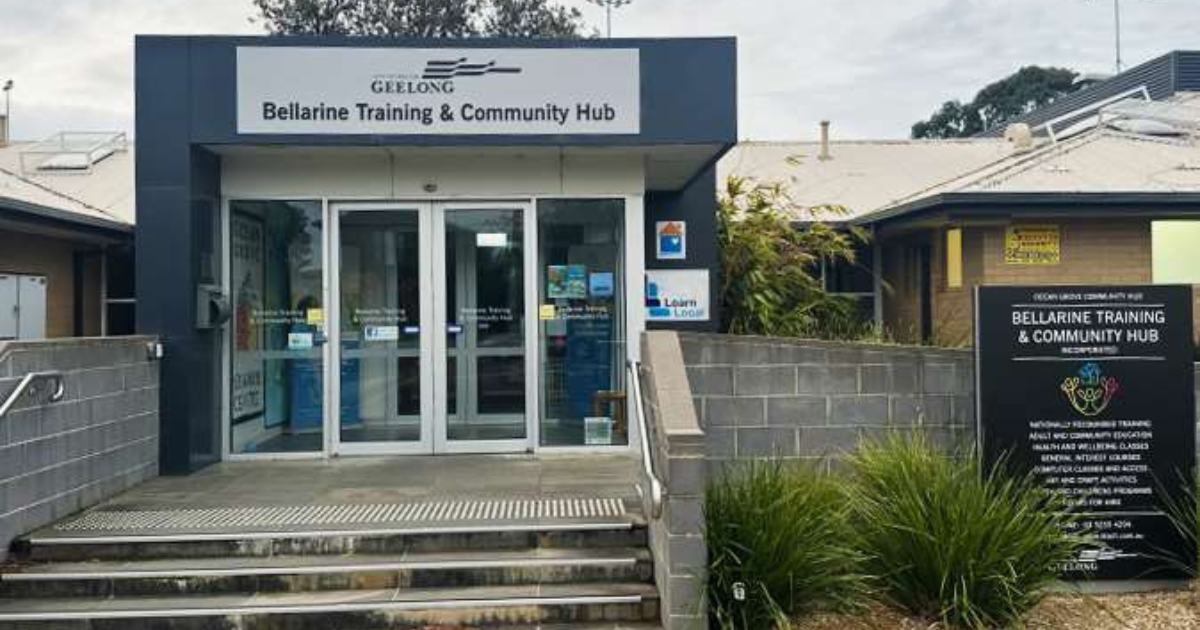Committee for Lorne: The tide waits for no man
The tide waits for no man
While there is much around this coast—indeed, any coast—that enthrals, nothing beats an everchanging tide … when to walk the beach*, when to fish, where to fish, when and where to surf, and what each new rising tide might bring.
*Dog walkers will know a ‘must have’ App … Tide Times Australia … that allows invaluable information re ‘when to walk Charlie on the beach’.
This last summer, a new twist has been added to the old saying … the tide waits for no man … as the less-experienced beachgoers found their cabanas, unwisely positioned at the water’s edge at the ebb, flooded or even swept away by a pesky seventh wave**.
**Multiple websites [example: https://tinyurl.com/yc5recyz] promote the theory that “… waves move in sets, and the ‘seventh wave’—the biggest wave in the middle of a set—often comes further up the beach”, though when I surfed, aeons ago, I always believed in the third. Indeed, as waves can come in rising sets of 3, 5, 7, or more, the seventh wave theory is likely a myth.
Worse, countless wave-naïve and city-centric tourists can now be seen turning their backs to the sea to capture ‘that special selfie’, quite unaware and ignorant of the potential threat behind them.
Once the summer throng has returned to the city, it is sobering to sit quietly on the “Rock of Contemplation” [my term only, but an apt one] far along the North Lorne Beach and watch as the ever-rising tides ravage and tear at the base of our North Lorne pines. I fear for this brave little trio that grimly clutch at the land … they cannot last much longer unless artificially rock-wall protected … and as you will see, I am ambivalent about the long-term sense of playing King Canute with rock walls to hold back the advancing sea. Nevertheless, as ‘the pines’ have been both familiar and treasured during our blink of geo-evolutionary time, it is sad to watch their footings wear and break apart. Some carefully placed rocks [not dumped but placed] might buy the old girls a few more years grace … and buy GORCAPA some much-needed community brownie points, even if futile in the longer term. Building sea walls for coastal protection is, at best, a temporising step that encourages the unrealistic hope that the problem has been fixed. No chance.
Scuttlebutt has it—though it seems only one of several ‘what the hell are they doing’ and ‘why the secrecy’ rumours swirling the Lorne township and agitating its social media page—that a seawall will need to gird [such a fortifying word] Point Grey before GORCAPA does whatever its secret plans turn out to be.
If that one of the many rumours is true, then—taking account of the futility of ramparting against an encroaching sea—why bother? Would it not be better to let the site’s natural beauty remain for as long as it may, then gracefully retreat when we must? Who knows? Nature has played a pretty dab hand in the beauty stakes so far! Give it free rein, I say, and move when necessary. After all, foreshores have been changing, moulding, and receding worldwide since the beginning of time, and ours is no different.
The ‘ravage and tear’ of the sea can be seen all along our southern coastline. In two or three lifetimes, the Twelve Apostles limestone stacks have dwindled to seven, or eight if you add the one formed when London Bridge fell to make two out of one. However, while a complete reshaping takes millennia, the process now seems to be happening at unseemly speed.
Quoting and paraphrasing the detailed geomorphological research into the form, origin, and dynamics of the Victorian coast by renowned researcher Neville Rosengren [https://tinyurl.com/zrxf9nhk] “… we now know that a verdant valley land bridge once joined Victoria and Tasmania. Once upon a time, the Yarra River meandered through a wooded valley that covered the shallow floor of Port Phillip Bay. It tracked southwards to pass between two narrow headlands—the ‘Heads’ and ‘Rip’ of today—then joined the Barwon to form a single river. Flowing west to the edge of the Bass Shelf, it then tumbled more than 100m—perhaps even as a waterfall [my invention]—into the Southern Ocean to the west of King Island and the south of Cape Otway”.

When the last Ice Age began to wane ~100,000 years ago, and the massive northern and southern polar ice caps and glaciers started to melt, the sea level began to rise. Earth scientists estimate that global sea levels have increased by ~120m over this time.
Then, at some point between 20,000 and 10,000 years ago, the rising sea rushed [or oozed] in to fill the shallow Bassian Plain between current day Victoria and Tasmania to a current depth of some 40m … … though whether it ‘rushed in’ or ‘oozed in’ is difficult to know. This set Tasmania adrift from the Australian mainland landmass
Data from the Imperial College, London [https://tinyurl.com/5hd924ee] suggests that “… the rate of sea-level rise in the last 20,000 years averaged ~1.2cm per year for first 10,000 of those years—though this was punctuated by several episodes [e.g. ~14,000 years ago] when the rate increased for a time to ~3cm per year.”
Sea levels then appear to have stabilised between 11,700 and 9,500 years ago and have sustained similar heights to those of today until a recent spike in global temperature has led to further Arctic and Antarctic melting. As a result, it looks as if we may be in store for another land onslaught by the relentless sea. Satellite data shows that global sea levels have risen at a mean rate of 3.3mm/year over the past 25 years [this equates to 3.3cm/decade or 33cm/100 years] … the rise ongoing.
While some data suggests the rate is increasing, with global increases of around 1m predicted by 2100, even this rate of rise remains statistically well within the scope of, or even less than, that of some past millennia, despite that the eye of a beholder today might see it otherwise.
But, as the North Lorne carpark has rapidly eroded into the sea in my lifetime, it is impossible not to ponder the advance of the ocean and the extraordinary phenomenon of the tide—that rhythmic rise and fall of the sea level generated by the combined effects of the gravitational force exerted by the moon, the sun, and the rotation of the earth.
Attempts at defending any low ground will thus inevitably prove futile. Puny defensive sea walls will be in vain, and the wider use of moveable structures or relocation to higher ground might be the more prudent approach.
In this context, my Rock of Contemplation, our north Lorne pines, Point Grey, the middens [and much more] are all sadly doomed.
John Agar
Feature Writer
A word from the chairman
We were fortunate recently to be able to travel to Fiji for a family holiday. One of the joys of travel is to experience different cultures, to learn from our experiences and to appreciate what we have in our own special part of the world.
Reflecting on our time away, apart from the beautiful scenery and consistently warm weather, a number of highlights come to mind:
• “Welcome Home”. This is the greeting when you arrive at the airport or hotel. At first, we were taken aback as Fiji is not our home, but then we understood that what it means is, “this is our home, this is your home, you are welcome”. Perhaps it is something we could adopt in Lorne.
• “Bula” means “welcome” but it also substitutes for “good morning”, “hello” or “G’day”. The words ring out from dawn to dusk. Beautiful, attentive, caring people with a special love for children.
• The work ethic and family disconnection. Many of the workers spend extended periods of time away from their families. They work 6 days a week, sometimes for 12 hours a day. Home may be a boat ride away, so they sleep in staff quarters at the resort.
• A visit to one of the local villages. We were greeted by the elders and drank Kava with them. We visited the local school where the primitive and cramped facilities gave our school-age grandchildren an appreciation for what they have at their school. We (Janet, my wife) delivered 50 bras (a sought-after commodity) to the local village women courtesy of the Lorne Op Shop. Much appreciated.
• Undrinkable water. The water is not safe to drink so you must drink bottled water (up to $A10 per litre). How lucky are we with our plentiful supply of pristine water in Lorne!
• Escape from screens. With no TV and limited internet, our children and grandchildren were forced to ditch the screens and get outside. And no, the world didn’t end because we were out of contact for a short while.
• Not a highlight, but a warning about credit card surcharges. These range from 3-3.5%, so if you are planning a visit, prepay or take cash.
• Fiji only has one industry, tourism. Cyclones and the Covid pandemic have had devastating effects on their tourism and it was the workers who suffered greatly. In 2020, tourism revenue dropped by 50% from the previous year and 37% of Fijians were receiving unemployment support. It is comforting to know that Australia has provided $351 million in budget support over the last 5 years.
Consider Fiji for your next escape.
*****
Once again, the Lorne community came out in force to honour Anzac Day. Attendances were in excess of 300 for both the dawn and 11am services, which were conducted with dignified solemnity and included readings by our school captains, the laying of wreaths by community organisation and fine renditions of the national anthems by our school choir. Well done Lorne.
Cheers (and don’t forget to vote)
John
Lorne Ward Events Calendar
May
4 – LAAC Winter Comp No 1. lines down after 6am, weigh in at the Lorne Aquatic and Angling Club at 12:30 followed by BBQ lunch.
4 – Opening Exhibition of Works Needlecraft, Embroidery & Tapestry, Bhanu Mistry ‘Journal’. 3-5pm at Lorne Community Connect
5-18 – Exhibition of Works Needlecraft, Embroidery & Tapestry, Bhanu Mistry ‘Journal’. 10am-4pm at Lorne Community Connect.
9 – Mix at Six Artist talk, in conjunction with Hoop Gallery and artist Meaghan Shelton 6pm at Lorne Community Connect.
10 – Lorne Dolphins Football and Netball V Irrewarra-Beeac, at Stribling Reserve, juniors match from 8:445am, seniors at 2pm
17 – Lorne Dolphins Football and Netball V Alvie, at Stribling Reserve, juniors match from 8:445am, seniors at 2pm
17-18 – Great Ocean Road Running Festival, Running, music, wellness, adventure.
June
7 – Lorne Market, 9am-3pm www.lornemarkets.com/
8 – Lorne Aquatic & Angling Club – Major Fishing Competition No 4, Weigh cut off 12.30pm. Free roast lunch for competitors, $10 non-fishing members.
July
6 – LAAC Winter Comp No 2. lines down after 6am, weigh in at the Lorne Aquatic and Angling Club at 12:30 followed by BBQ lunch.


















